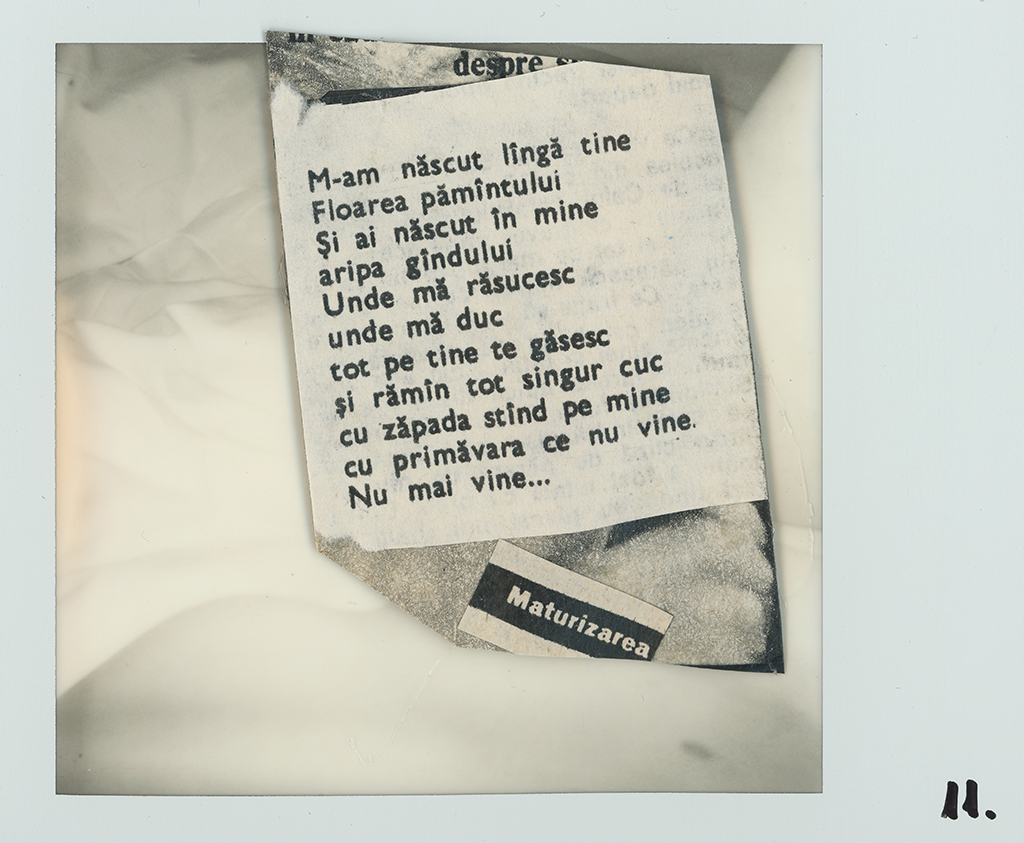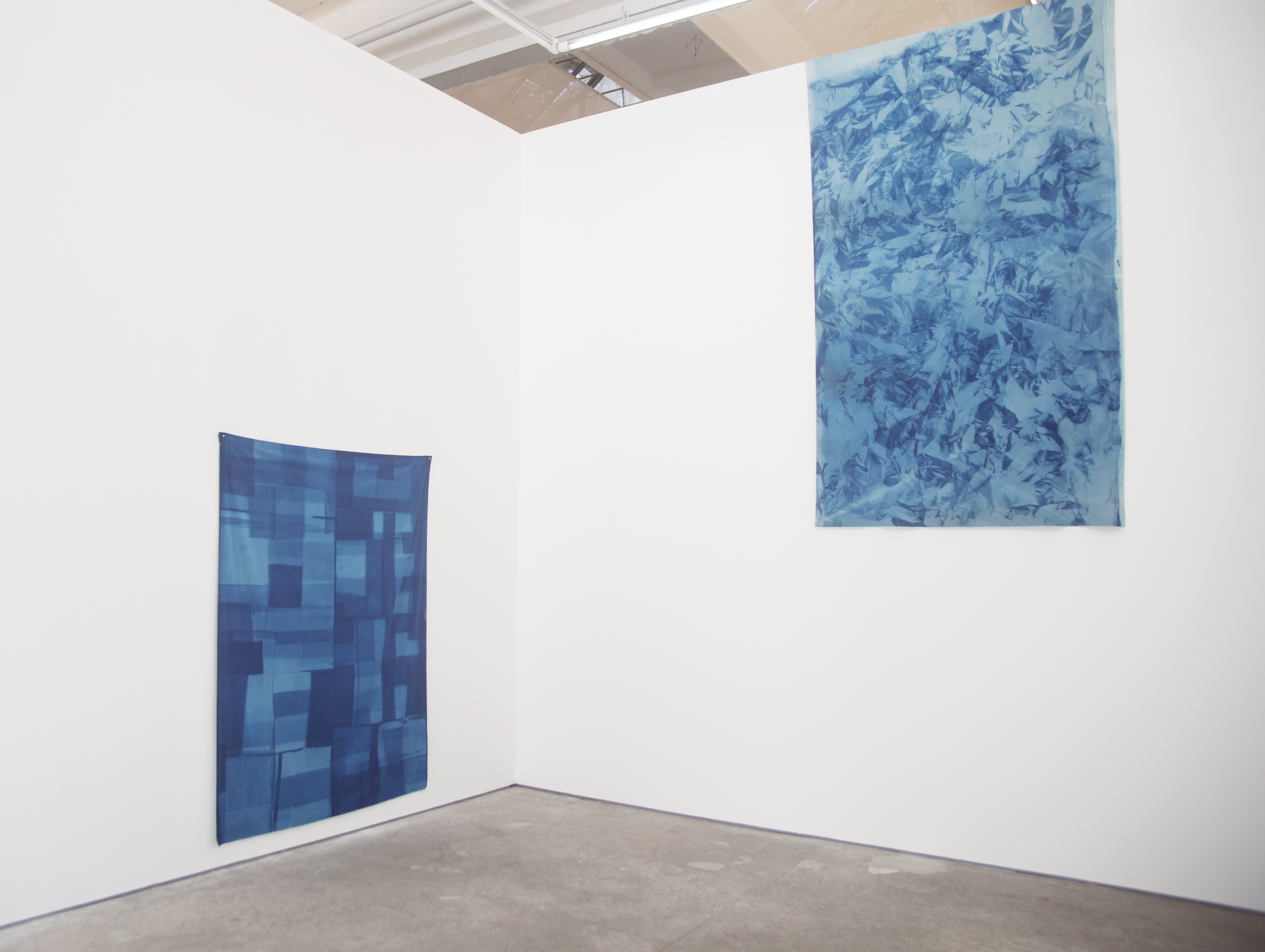
Irina Dora Măgurean (b. Cluj, Romania) lives and works in Cluj-Napoca, Romania. She studied at the University of Art and Design in Cluj, where she received her PhD in visual arts (2013). She conducted research at MOME, Budapest, and at The Academy of Arts, Architecture and Design, Prague. She is currently a lecturer in photography at UAD Cluj and the coordinator of the artist-run exhibition space Camera, located at Centrul de Interes, Cluj. In her practice, she focuses on exploring photography as a medium and examining photography’s boundaries through an experimental approach.
Solo shows include: A matter of light (Muzeul de Artă, Cluj, 2021); Blur, curator Maria Rus Bojan (Brukenthal Museum, Sibiu, 2020); Image Library (New Now art space, Frankfurt, 2018).
Group shows: Bekannte (Patrick Heide Contemporary, London, 2018); Jeune Creation Europeenne (The Belfry, Montrouge, 2017); Almost Object (Vajda Museum, Szentendre, 2016).
Camera was launched in 2017 in Centrul de Interes, Cluj, Romania, with the purpose of introducing the local public to international photography. Camera focuses on artistic approaches that use photography, and not solely on straight photography. In addition, since 2019, Camera Project Space has looked to promote emerging Romanian photographers and increase the visibility of the local scene.
L: You are an artist, lecturer, curator and cultural events producer at Camera, in Cluj, Romania. What does it mean to wear all these hats? How is your artistic practice influenced by the other roles?
I: When listed like that, it all sounds really fancy, I haven’t thought about doing all of them until now 😊. I do them organically, they overlap. At my core I’m an artist, but my lecturer position puts me in touch with many talented young people. I thought I'd do something to support them, as many become detached from arts after graduation; as a student, I didn’t have such an opportunity - a space exclusively dedicated to photographic artists (especially young ones) and I hope some positive results will come with time.
I don’t think of myself as a curator, although by making connections between projects I could frame my activity within this area too, but the truth is that I like organising exhibitions, coming up with a concept that links all the exhibited works. The first exhibition I did was quite ambitious: Movie in photography for TIFF (Transylvania International Film Festival), at the Art Museum in Cluj, with both local and foreign artists, showing photographs created as film stills. I was a student back then.
My artistic practice is not directly and consciously influenced by the other activities, but what I’ve noticed is that my outside-of-studio work (teaching and the Camera-related activities) keep me in a state of continuous development – you have to keep in touch with the international art world, to understand what’s going on around you.

photo: Irina Dora Măgurean
L: Camera is an artist-run space. What does this concept entail and how is it different from a gallery?
I: It’s a space dedicated to art events managed by one or more artists. It’s not a commercial space, unlike a gallery, and it can be perceived as more flexible and experimental.
L: How would you describe the Romanian photography scene? Is it any different than European photography?
I: It is an emerging, but very dynamic scene. Photography has been practiced for a long time in Romania, both as documentation (of performance, land art, etc.), but also as artwork in its own right. Today photography is quite diverse, maybe not as experimental as in the rest of Europe, but equally qualitative. What we lack are the necessary resources to promote it as much as ‘classical’ art. I have noticed a difficulty in separating photography as technology and commercial photography from art photography; many remain stuck at the discussion about gear and miss the essence, the message.

photo: Ana Maria Timofticiuc
L: Does the Romanian public have an appetite for photography? Who is Camera’s audience?
I: There is an audience and their interest is growing. This was how Camera started in 2017 – with the goal to introduce the local public to international art photography. This is almost completely lacking in Cluj. There has been an event here and there, showing reportage photography (which is more accessible and of interest), but exhibiting art photography, especially experimental approaches (I don’t mean straight, but expanded photography) is quite rare. Camera is to this day the only space in the country to show such work.
Camera’s audience is mostly made up of young graduates with an interest in art. Camera is located inside Centrul de Interes, a contemporary art centre that houses many galleries, so the collective openings are very busy, and it’s delightful to see so many people coming to see the exhibitions.

artwork: Driers Segers
L: How do you get in touch with the artists you exhibit and what is the best strategy for young artists to be more visible?
I: During the pandemic, I’ve done this online. Before, I used to meet artists at different events (residencies, fairs, exhibitions). I would receive proposals by e-mail, or I would notice students’ works and ask them to show me more so I can understand their practice.
I don’t believe there is a 'best’ method that works for everyone. Raising your profile takes time and perseverance. A good strategy is to apply to open calls or send work to profile magazines, the social aspect is also very important, and being in contact with the local art scene where they live. A nice thing is Instagram, you can do a lot of interesting things there and, in some ways, increase your visibility.
L: You show both Romanian and foreign artists. What are the challenges of collaborating with international artists?
I: The biggest challenge is transporting the works 😊. Also, it’s quite complicated when they can’t attend the exhibition and only send the works, as they send a mock-up so that the installation matches their requirements as closely as possible.

photo: Alexandru Măciucă
L: In the past two years you organised open calls for graduates and the selected artists were shown at Camera. Do you think young Romanian artists have an interest in some specific themes? What would they be?
I: We actually saw a variety of themes in the submitted works. What we noticed a few times but applied in different ways was an interest in the self and in self-analysis. From my research, I have noticed an interest in feminist documentary photography, in physical/sexual abuse or in Romanian emigrant workers. There is also a snapshot trend. The couple, romantic relationships, the subject of love-sexuality and gender identity are also approached fairly often.
L: In January, Camera was the virtual host for the event At the beginning of century, where you presented one work belonging to a selection of artists each day. The images are family photographs reinterpreted through collage, drawing, engraving, and text. The representation of the family stemming from the personal photography archive is part of a global trend. Where do you think this interest comes from and what can it possibly mean for the history of art? What are Romanian artists trying to resolve, to express through this approach?
I: Firstly, this project was the brief we worked on with the students for the Mixed Media unit. The idea came from photographs of children taken at the beginning of the 20th century. These were families that only owned one photograph of their children and going to the photographer was a real event. The students are born one hundred years later, at the beginning of a new century, when photography is ordinary and accessible, and they have hundreds or thousands of photographs from their childhood. Here we are confronted with a selection issue, why do we hold on to a photograph instead of another? The emotional element is decisive, which is why I chose to work with personal photography archives.
Family archives and the work made about them stand for a search for one’s origins, a return to one’s roots, getting as close as possible to one’s starting point. In other words: in search of one’s identity.

photo: Irina Dora Măgurean
L: Should the artists who studied abroad return to Romania after graduation? What can they expect by returning home?
I: It’s very difficult to answer this question. The question is - what is waiting for you anywhere? It is an extremely personal choice and many factors are involved in making it. I don’t think one should expect anything, only their family’s joy. You can make it anywhere if you’re good at what you’re doing. However, I also think changing the environment is beneficial. If studying abroad is not possible, at least a fixed-term scholarship should be compulsory for students.
L: What is the ideal future of Camera in your view?
I: For it to be a landmark for the Romanian art photography scene.
Camera Cluj
Irina Dora Măgurean